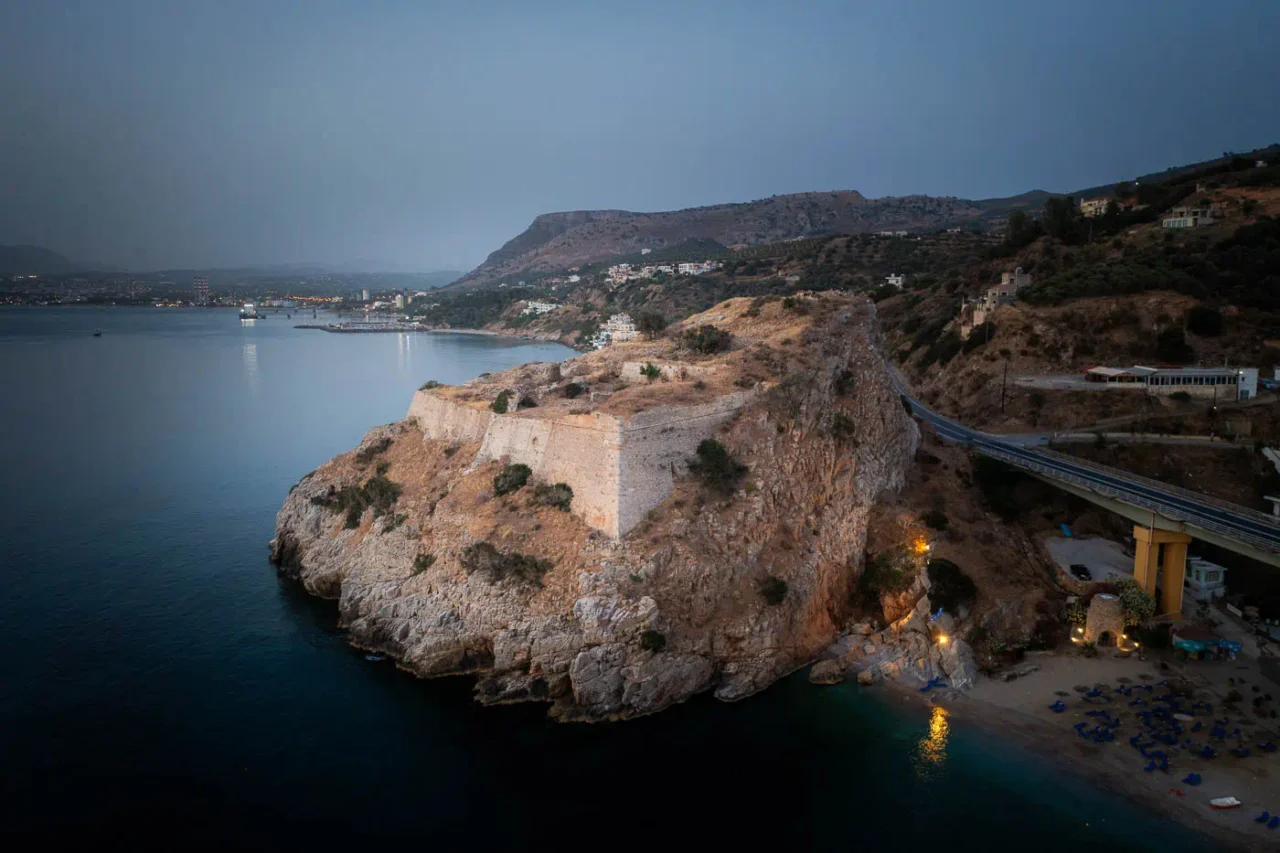



Perched atop a limestone cliff overlooking the picturesque Palaiokastro beach, the Palaiokastro Fortress stands as a silent sentinel, bearing witness to centuries of Cretan history. This Venetian stronghold, constructed between 1573 and 1595 based on a design by Latino Orsini, played a crucial role in safeguarding the Bay of Heraklion from enemy incursions.
A Strategic Stronghold
The fortress’s strategic location, in conjunction with the Koules Fortress, provided comprehensive protection for the bay, a vital maritime hub for trade and defense. The Palaiokastro Fortress, with its three distinct levels adapting to the sloping terrain, offered an impressive defensive advantage. Its unique entrance, carved halfway into the rock, further enhanced its security.
Architectural Features
The fortress’s tri-level design served specific functions. The lowest level housed the powder magazines, partially embedded into the slope for natural protection. Adjacent to these magazines was a water cistern, collecting rainwater and providing a ready source of water in case of fire. The second level accommodated the barracks for the garrison, while the uppermost level featured a chapel.
Venetian Legacy
The winged lion of St. Mark, the emblem of the Venetian Republic, adorns the central masonry, a testament to the fortress’s Venetian origins. Francesco Basilicata’s 1618 depiction of the fortress and its surroundings offers a glimpse into its former glory. Below at the beach, there is a restored Venetian lime kiln that was obviously used to produce the building materials for their fortress.
This restored lime kiln at Paliokastro beach by the 13th Byzantine Antiquities further emphasizes its significance as a cultural and historical landmark, adding to the allure of the Paliokastro area.
Ottoman Conquest and Beyond
The fortress fell to the Ottomans during the Cretan War (1645-1669), as documented by M. Tzane-Bouniali. G. Gerola, in the early 20th century, meticulously mapped and photographed the fortress, providing valuable documentation of its state at that time.
Present Day and Future Prospects
Today, the Palaiokastro Fortress, though partially ruined, remains an imposing structure. A small church dedicated to St. Mark, constructed amidst the ruins, is a testament to the site’s enduring cultural significance. The Municipality of Malevizi, in collaboration with the 13th Ephorate of Byzantine Antiquities and the Palaiokastro Cultural Association, is actively pursuing the preservation, restoration, and enhancement of this historic monument.
Fortifications: Key Points
- Construction Period: 1573-1595
- Location: Palaiokastro Beach, near Heraklion, Crete
- Dimensions: Three-level fortress adapted to the sloping terrain
- Historical Significance: Venetian fortress protecting Heraklion Bay, later captured by the Ottomans
- Current Status: Partially ruined, undergoing restoration efforts
Access
Next to the national road of Heraklion - Rethymnon and above the Palaiokastro beach.


There are no comments yet.